San Marzano tomatoes, celebrated worldwide for their unique taste, are a culinary treasure of Italy and a staple ingredient in countless dishes. Originating from the small town of San Marzano sul Sarno near Naples, these plum-shaped tomatoes are renowned for their balanced sweet and tangy flavor, low acidity, rich pulp, and minimal seed content – attributes that make them ideal for creating sauces and purees. Moreover, San Marzano tomatoes are distinguished by their ‘DOP’ status (Denominazione d’Origine Protetta) which certifies their authenticity and geographic origin, adding a prestigious touch to the humble fruit.
Despite their overseas origin, San Marzano tomatoes can be cultivated in your backyard garden, granting you access to this extraordinary ingredient right at your fingertips. Understanding the correct methods to grow, care for, and harvest these tomatoes can make the difference between a successful, fruitful yield and a disappointing one.
Watch Our Video on The Topic
In this comprehensive guide, we’ll cover everything you need to know about growing and caring for San Marzano tomatoes. We’ll start with an overview of the characteristics and benefits of these special tomatoes, followed by detailed instructions on creating the perfect growing environment, nurturing the plants through their growth stages, managing potential pests and diseases, and finally, harvesting and saving seeds for future crops. Whether you’re an experienced gardener or a beginner, this guide will provide invaluable tips and insights to help you cultivate San Marzano tomatoes successfully.
Dive in, and get ready to experience the joy and rewards of nurturing your own San Marzano tomatoes. The fruits of your labor will be worth the effort – not just in the bountiful harvest you’ll enjoy, but also in the mouthwatering dishes you can prepare from it.
Quick Facts
| Key Aspect | Quick Fact |
|---|---|
| Species Name | Solanum lycopersicum |
| Variety | San Marzano |
| Type | Indeterminate |
| Origin | Italy (Mount Vesuvius region) |
| Planting Time | Sow seeds indoors 6-8 weeks before the last spring frost date. |
| Ideal Soil Type | Loamy and rich in organic matter |
| Ideal Soil pH | Slightly acidic to neutral (6.0-6.8) |
| Sunlight Requirement | Full sun (at least 6-8 hours daily) |
| Watering Requirement | Deep, infrequent watering (approximately 1-2 inches per week) |
| Fertilizer Requirement | Balanced vegetable or tomato-specific fertilizer |
| Harvest Time | Approximately 80-90 days after transplanting |
| Common Pests | Aphids, Tomato Hornworms, Whiteflies |
| Common Diseases | Early Blight, Late Blight, Fusarium Wilt, Verticillium Wilt |
| Use | Primarily used for making tomato sauces, pastes, and canned tomatoes |
Understanding San Marzano Tomatoes
San Marzano tomatoes are a variety of plum tomato, distinct in appearance and taste. Unlike round garden tomatoes, they are elongated and slender, with a vibrant red skin that covers a thick, fleshy pulp. One of the traits that sets them apart from other tomato varieties is their low seed count and minimal water content, contributing to their dense texture and making them highly desirable for cooking purposes.
When it comes to flavor, San Marzano tomatoes stand out for their well-balanced sweet yet tangy taste. They have a low acidity level compared to other tomatoes, which results in a sweeter and less tart flavor. This distinct taste profile is part of what makes San Marzano tomatoes a key ingredient in many recipes, particularly in Italian cuisine where they are used extensively in sauces, pizzas, and pasta dishes.
From a nutritional perspective, San Marzano tomatoes, like other tomato varieties, are packed with health-promoting compounds. They are an excellent source of vitamins C and K, potassium, and the antioxidant lycopene, which has been linked to many health benefits including reducing the risk of heart disease and certain cancers. They’re also low in calories and high in dietary fiber, making them a healthy addition to any meal.
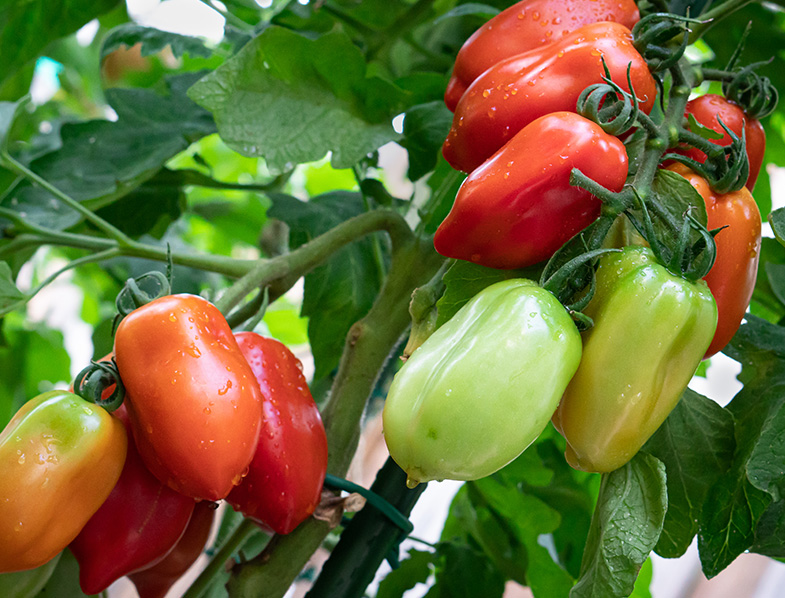
Finally, San Marzano tomatoes are unique due to their DOP (Denominazione d’Origine Protetta) status. This certification, regulated by Italian law, ensures that any tomatoes labeled as “San Marzano” are grown in the fertile volcanic soil in the region around Mount Vesuvius, using traditional methods. This not only ensures the quality and authenticity of these tomatoes but also protects the culinary heritage of the region. This seal of quality, however, does not limit their cultivation elsewhere – they can be grown successfully outside Italy, providing you adhere to the right growing conditions and care.
In the upcoming sections, we will delve into these aspects, equipping you with the knowledge and skills needed to cultivate your own San Marzano tomatoes, reaping the benefits of their exquisite taste and nutritional value.
The Ideal Environment for Growing San Marzano Tomatoes
When you’re planning to grow San Marzano tomatoes, understanding the ideal conditions for their growth is crucial. These tomatoes prefer a warm, Mediterranean climate, but can be grown in various zones with the right care.
Soil Type and pH
San Marzano tomatoes thrive best in well-drained soil rich in organic matter. The soil should be loamy and deep enough to encourage root development. Adding compost or other forms of organic matter can greatly enhance the soil’s fertility, providing the nutrients needed for optimal tomato growth.
The soil pH is also important. San Marzano tomatoes prefer slightly acidic to neutral pH levels, typically between 6.0 and 6.8. You can determine your soil’s pH level using a soil test kit, which can be found at most gardening supply stores. If your soil is too alkaline, you can increase its acidity by adding sulfur or peat moss. If it’s too acidic, you can make it more alkaline by adding lime.
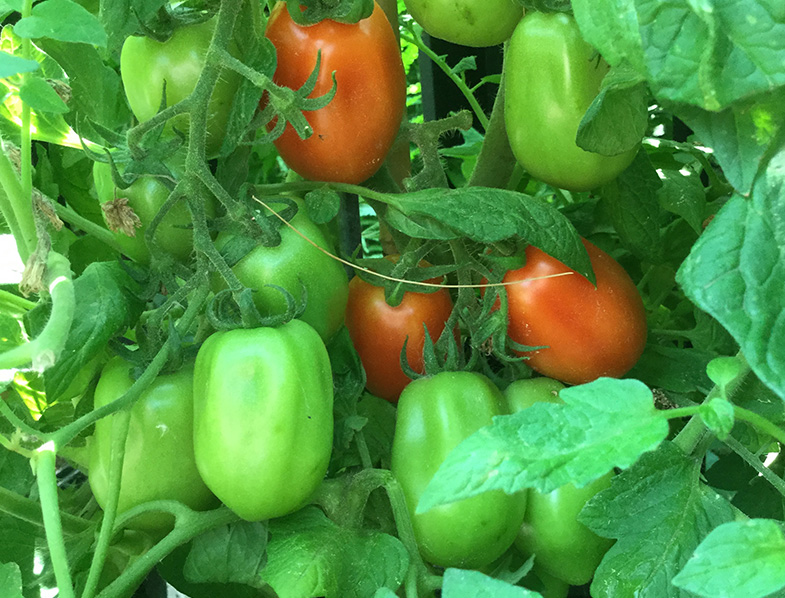
Temperature and Sunlight Requirements
San Marzano tomatoes are warm-season plants that thrive in temperatures between 70 and 85 degrees Fahrenheit. While they can tolerate temperatures as low as 60 degrees Fahrenheit, they will stop growing if the temperature drops below 50 degrees or rises above 95 degrees.
These tomatoes also require plenty of sunlight – at least six to eight hours of direct sunlight each day. This is crucial for photosynthesis and helps to develop the sugars that contribute to the tomatoes’ distinctive flavor. Choose a planting location that gets full sun for most of the day.
Suitable Geographical Locations
While they are indigenous to the region around Mount Vesuvius in Italy, San Marzano tomatoes can be grown in many parts of the world. They are typically suitable for hardiness zones 5 through 11. However, with the right care and preparation, they can be grown successfully outside these zones too.
In cooler regions, starting the seeds indoors or using a greenhouse can provide the warmth these plants need to get a good start. The seedlings can then be transplanted outdoors once the danger of frost has passed and the soil temperature has consistently reached at least 60 degrees Fahrenheit.
Overall, with a little effort and attention to their environmental needs, you can create the ideal conditions for growing San Marzano tomatoes in your own garden, regardless of where you live.
Getting Started: Seed Germination and Transplanting
Growing San Marzano tomatoes from seed can be a rewarding experience. It allows you to witness the complete life cycle of the plant and gives you the satisfaction of nurturing your own plants from scratch. Here’s how you can get started:
Seed Germination
Start by choosing high-quality San Marzano seeds from a reliable source. For best results, sow the seeds indoors 6-8 weeks before the last expected spring frost date in your area.
Fill a seed tray or small pots with a good quality seed-starting mix. Plant the seeds about 1/4 inch deep and lightly cover them with the soil. Keep the soil moist, but not waterlogged. Covering the tray or pots with a plastic wrap can help maintain humidity, essential for seed germination.
Place the tray in a warm location. The ideal temperature for tomato seed germination is between 70 and 80 degrees Fahrenheit. A heat mat can be beneficial to maintain this temperature. Germination usually occurs in 7-14 days.
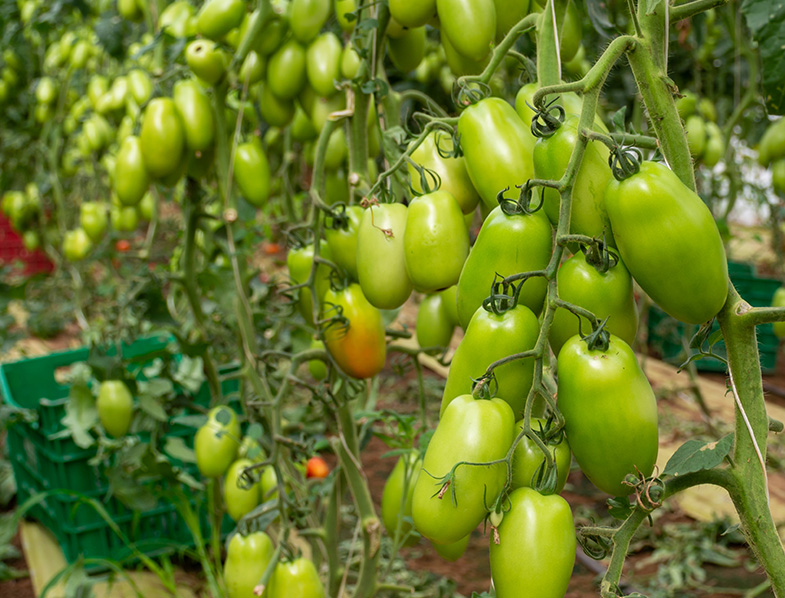
Transplanting Seedlings
Once the seedlings have developed at least two sets of true leaves (the ones that appear after the initial seed leaves), they are ready to be transplanted. Before transplanting, harden off the seedlings by gradually exposing them to outdoor conditions. Start by placing them outside in a sheltered location for a few hours each day, gradually increasing the time spent outdoors over a week.
Choose a planting spot that gets plenty of sunlight and has well-drained soil. Dig a hole for each seedling, spaced about 2-3 feet apart. Plant the seedlings deeply, burying the stem up to the first set of true leaves. This encourages the growth of additional roots along the buried stem, enhancing the plant’s stability and nutrient uptake.
Tips for Healthy Root Development
Once transplanted, it’s essential to provide the plants with the right care to ensure healthy root development. Regular watering is crucial, especially in the first few weeks after transplanting. Aim to keep the soil consistently moist, but avoid waterlogging which can lead to root rot.
A layer of mulch around the base of the plants can help conserve soil moisture and suppress weeds. As the plants grow, regular feeding with a tomato-specific fertilizer will provide the necessary nutrients for vigorous growth.
Remember, the effort invested in starting your San Marzano tomatoes from seed and nurturing their early growth will pay off with a bountiful harvest of delicious tomatoes later in the season.
Ongoing Care and Maintenance
San Marzano tomatoes, like any other variety, require careful tending and consistent care to produce a healthy, fruitful harvest. Proper watering, fertilizing, and pruning are all important steps in this process.
Watering: Frequency and Amount
Consistent watering is crucial to the health of your San Marzano tomatoes. These plants prefer deep, infrequent watering as opposed to light, daily watering. Aim to water the plants thoroughly until the moisture reaches the deeper roots, and then allow the soil to dry out slightly before watering again.
Generally, tomatoes need about 1-2 inches of water per week, but this can vary based on your climate and the weather. During hot, dry spells, they may need additional water. To prevent diseases, water the plants at the base, avoiding wetting the foliage as much as possible.
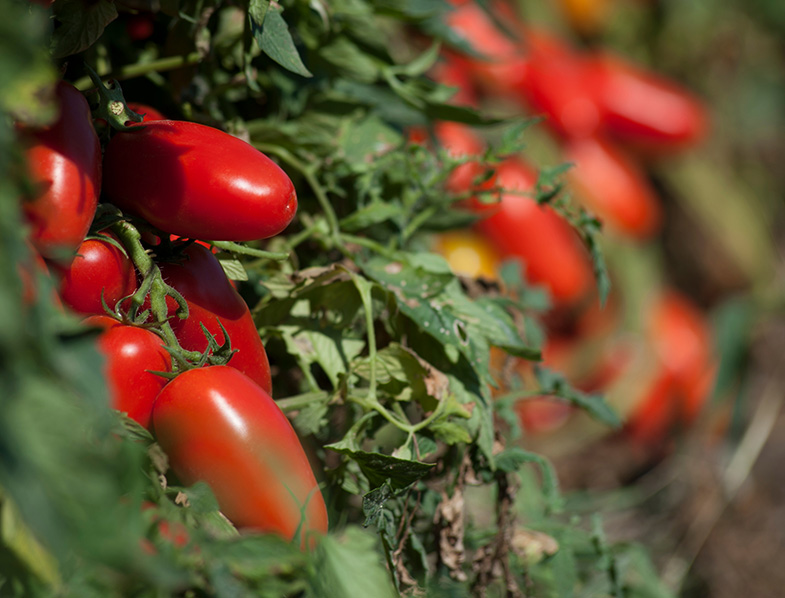
Fertilizing: What Kind, When, and How Often
Fertilizing your San Marzano tomatoes provides them with the nutrients they need to grow and produce fruit. Use a balanced vegetable or tomato-specific fertilizer to ensure the plants receive the right mix of nutrients.
Start fertilizing when you transplant the seedlings, and continue feeding them every 2-4 weeks throughout the growing season. Follow the package instructions to determine the correct amount of fertilizer to use.
Pruning and Staking: Why It’s Important and How to Do It
Pruning your San Marzano tomatoes helps increase airflow around the plants, reducing the risk of disease. It can also lead to larger, though fewer, fruits. To prune, simply remove the small shoots that appear in the “V” between the main stem and the branches.
Staking or caging your San Marzano tomatoes is also important. These indeterminate plants can grow quite tall, and the heavy fruit can cause the branches to break if they’re not supported. Use stakes, cages, or trellises to keep the plants upright, making sure to install them early in the season before the plants get too large.
Regular care and maintenance of your San Marzano tomato plants will increase their productivity and longevity, leading to a more bountiful harvest. With attention and patience, you can enjoy the rich, robust flavor of homegrown San Marzano tomatoes straight from your garden.
Common Pests and Diseases
While growing San Marzano tomatoes can be a rewarding experience, it’s essential to be aware of the common pests and diseases that can affect your plants. Being able to identify and manage these potential issues is key to maintaining the health of your tomato plants.
Identification and Prevention of Common Pests and Diseases
Some common pests that attack tomato plants include aphids, tomato hornworms, and whiteflies. Aphids are small, soft-bodied insects that suck sap from the plants, often resulting in curled, yellow leaves. Tomato hornworms are large, green caterpillars that can devour entire leaves and small stems. Whiteflies are tiny, white insects that can weaken the plant by sucking its juices.
Several diseases can also affect San Marzano tomatoes. Early blight and late blight are fungal diseases that cause spots on leaves, often leading to leaf drop and potentially fruit rot. Fusarium wilt and Verticillium wilt are soil-borne diseases that cause wilting and yellowing of leaves, often resulting in the death of the plant.
Prevention is the best defense against pests and diseases. Keeping your garden clean, rotating crops, and choosing disease-resistant varieties can go a long way in preventing these issues. Providing your plants with proper care and optimal growing conditions can also help them resist pests and diseases.
Natural and Chemical Solutions to Control and Eliminate these Threats
If pests or diseases do appear, there are several measures you can take. For pests, manual removal, introducing beneficial insects (like ladybugs for aphids), or using insecticidal soaps or sprays can be effective.
For diseases, removing and destroying affected plant parts can prevent the disease from spreading. Fungicides can be used to treat fungal diseases, but it’s important to apply them at the first sign of disease for the best effect.
While dealing with pests and diseases can be challenging, don’t let these potential problems discourage you. With careful observation and prompt action, you can protect your San Marzano tomatoes and enjoy a healthy, abundant harvest.
Harvesting San Marzano Tomatoes
One of the most rewarding aspects of growing your own San Marzano tomatoes is the moment of harvest. Seeing the fruits of your labor hanging ripe and ready on the vine is a satisfying experience that also marks the beginning of a culinary adventure.
When to Harvest San Marzano Tomatoes
San Marzano tomatoes are typically ready to harvest about 80-90 days after transplanting, depending on the growing conditions. The main indicators that your tomatoes are ready to be picked are their color and firmness.
A ripe San Marzano tomato will have a bright red color and will yield slightly to gentle pressure. Avoid picking tomatoes when they are overly soft or have spots. However, keep in mind that it’s better to harvest slightly underripe tomatoes and let them ripen off the vine rather than letting them overripen and potentially rot on the vine.
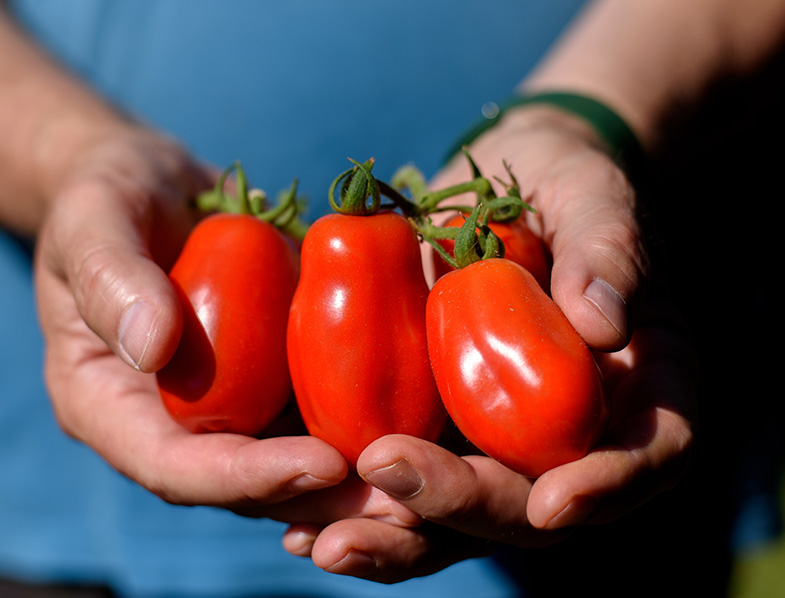
How to Pick and Store Them to Maximize Freshness
When harvesting your tomatoes, use a pair of sharp, clean scissors or pruners to cut the stem, leaving a small part of it attached to the fruit. This helps to prolong the shelf life of the tomatoes. Avoid pulling or twisting the tomatoes off the vine, as this can damage the plant.
Once harvested, store your tomatoes at room temperature away from direct sunlight. Refrigerating tomatoes is not recommended as it can affect their texture and flavor. If you find yourself with an abundance of ripe tomatoes that you can’t use immediately, consider preserving them by canning, drying, or freezing for later use.
Finally, remember that regular harvesting encourages more production. The more you pick, the more your San Marzano tomato plants will produce, so don’t hesitate to harvest your tomatoes as they ripen. Your kitchen and your taste buds will thank you!
Saving Seeds for Future Planting
If you have had a successful season growing San Marzano tomatoes, you might want to save some seeds for future planting. This can be a cost-effective way to continue your gardening journey and can also help preserve this wonderful tomato variety.
Selecting and Preparing Seeds for Saving
Choose the best and healthiest tomatoes for seed saving. Look for tomatoes that are fully ripe, disease-free, and representative of the plant’s features. You want to select seeds from the plants that have the traits you desire, such as size, color, and taste.
Cut the selected tomato in half and squeeze out the seeds along with the surrounding gel into a small container. The gel that surrounds tomato seeds contains growth inhibitors designed to prevent the seeds from germinating inside the tomato. This gel needs to be removed before the seeds can be stored.
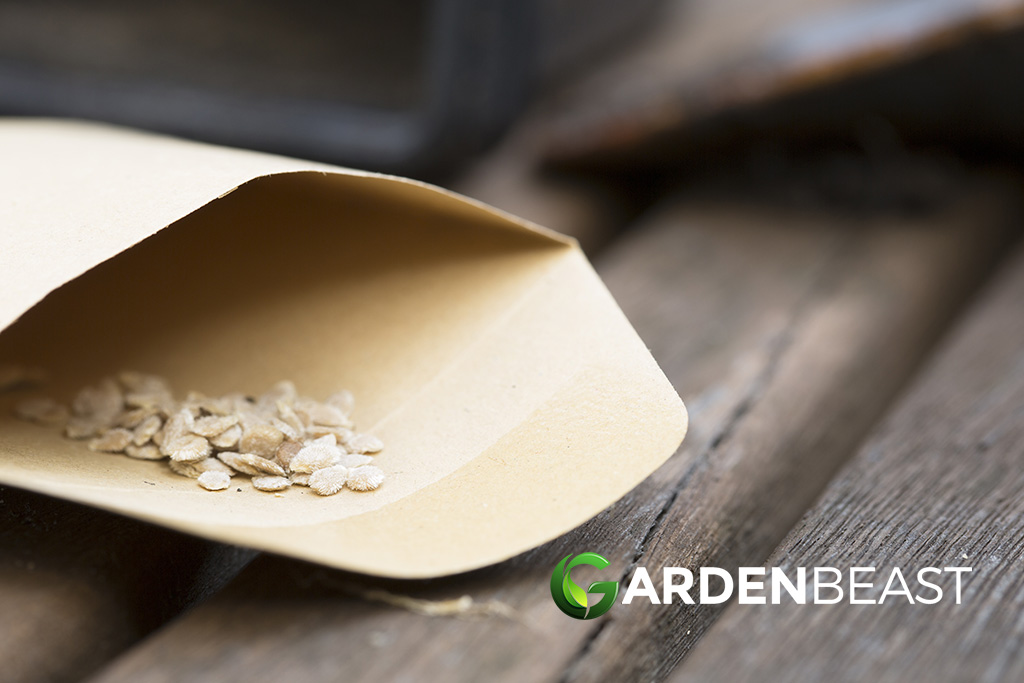
Fermentation Process
Fermentation is a common method used to remove the gel coating. Leave the seeds and gel mixture in the container at room temperature for 2-3 days. This will allow the gel to ferment and dissolve. Stir the mixture once a day. It’s okay if a layer of mold forms on the surface – this is part of the fermentation process.
After 2-3 days, add water to the container and stir. Viable seeds will sink to the bottom while non-viable seeds and other debris will float to the top. Pour off the floating matter and repeat this rinsing process until only clean seeds remain at the bottom.
Drying and Storing Seeds
Spread the clean seeds in a single layer on a plate or a screen to dry. Avoid using paper or cloth as the seeds might stick to these materials. Allow the seeds to dry completely in a cool, well-ventilated area away from direct sunlight. This may take up to a week.
Once the seeds are thoroughly dry, store them in an envelope or airtight container. Label the container with the tomato variety and the date. Store it in a cool, dark place until you’re ready to plant next season. Properly stored tomato seeds can remain viable for up to six years.
By saving seeds from your San Marzano tomatoes, you can continue the cycle of growth and harvest, enjoying the fresh, homegrown flavor of these exceptional tomatoes year after year.
Conclusion
The art of growing San Marzano tomatoes may require some time, effort, and patience, but the rewards are undoubtedly worth it. From seed germination to the joy of harvesting, every step of the journey offers its own unique satisfaction. You’ll enjoy not only the rich, flavorful fruits of your labor, but also the knowledge and experience gained along the way.
Growing San Marzano tomatoes is more than just a gardening project—it’s an opportunity to engage with nature, to understand the intricacies of plant life, and to contribute to the cycle of growth and renewal. It’s also a chance to bring the true flavor of Italian cuisine into your own kitchen, using tomatoes you’ve grown and harvested yourself.
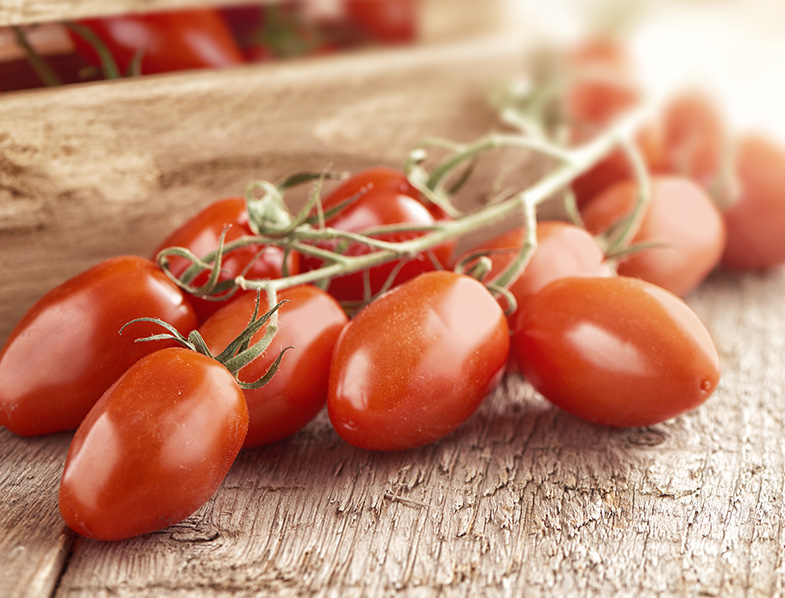
Remember, gardening is a continual learning process. Even seasoned gardeners face challenges and make discoveries with each new growing season. So, whether you’re a first-time grower or an experienced green thumb, embrace the journey and look forward to the taste of success: fresh, sun-ripened San Marzano tomatoes straight from your garden to your table.
With careful attention to the guidelines and tips outlined in this article, you’ll be well on your way to a bountiful harvest. Happy gardening!
Frequently Asked Questions
How tall do San Marzano tomato plants grow?
As indeterminate plants, San Marzano tomatoes continue to grow throughout the growing season, typically reaching a height of 4-6 feet, though they can grow even taller in favorable conditions. Staking or caging is recommended to support the plants as they grow and bear fruit.
Can I grow San Marzano tomatoes in a pot?
Yes, you can grow San Marzano tomatoes in pots, but be sure to choose a pot that’s large enough to accommodate the plant’s growth—typically a pot with at least a 5-gallon capacity. Ensure the pot has good drainage and use a high-quality potting soil.
Why are my San Marzano tomatoes cracking?
Tomato cracking often happens due to fluctuations in watering. If the plant gets too dry and then is suddenly watered heavily, the interior fruit may absorb water and expand faster than the outer layer can grow, leading to cracks. Maintain consistent watering to prevent this issue.
When should I prune my San Marzano tomato plants?
It’s best to start pruning when the plants are fairly young, around 12-18 inches tall. Remove the small shoots that appear in the “V” between the main stem and the branches. Continue to prune as needed throughout the growing season to improve airflow and reduce the risk of diseases.
How do I know if my San Marzano tomatoes are ripe?
Ripe San Marzano tomatoes will have a bright red color and will yield slightly to gentle pressure. Avoid picking tomatoes when they are overly soft or have spots. If necessary, tomatoes can be picked when they’re nearly ripe and then allowed to fully ripen off the vine.
